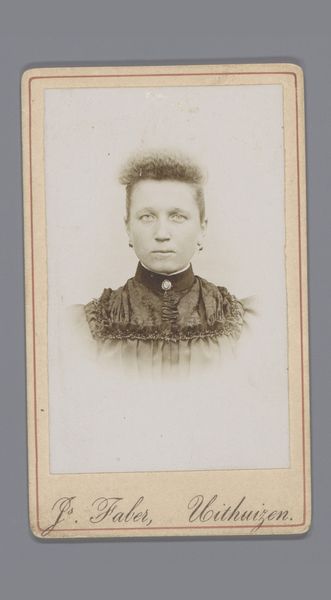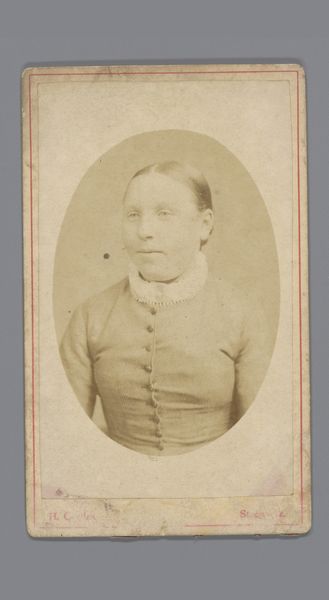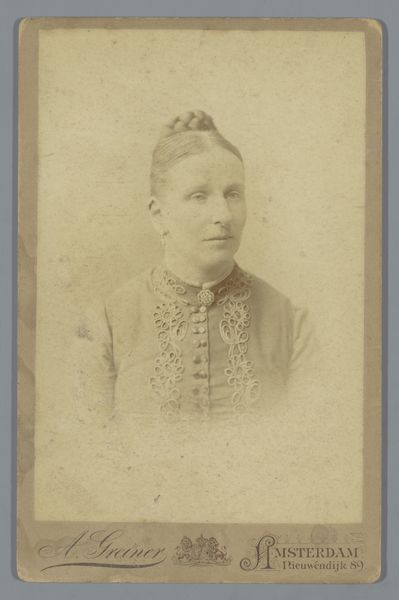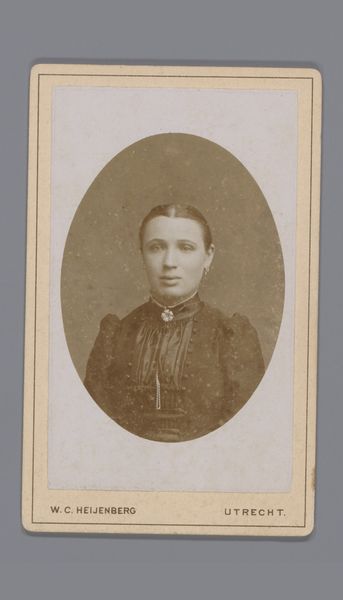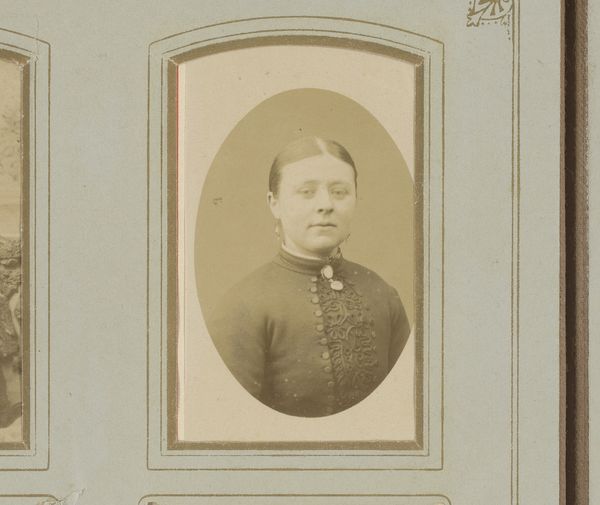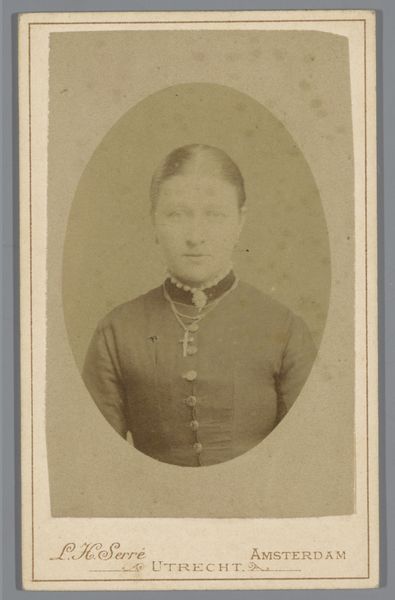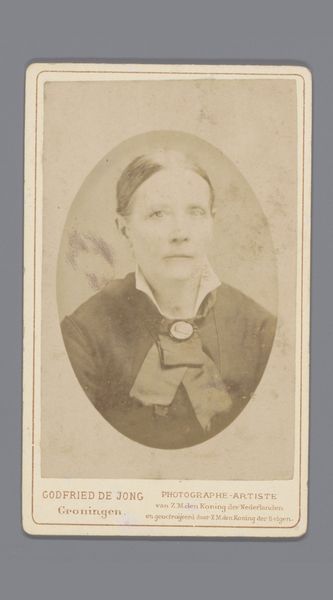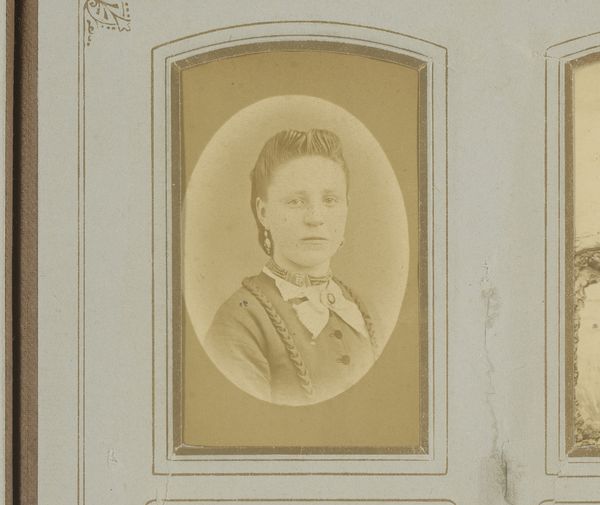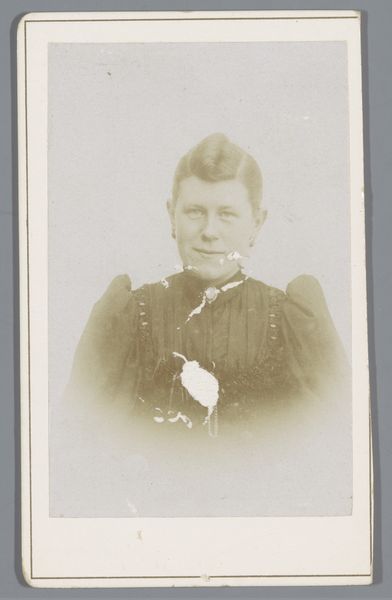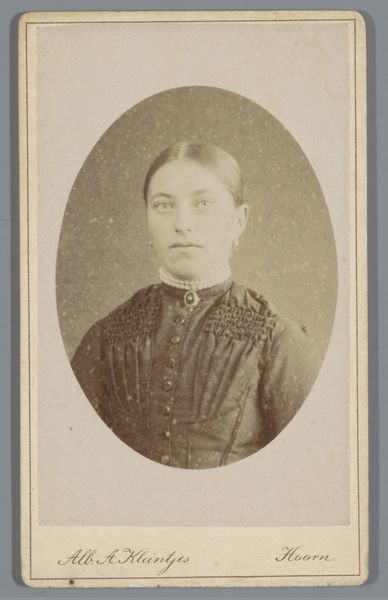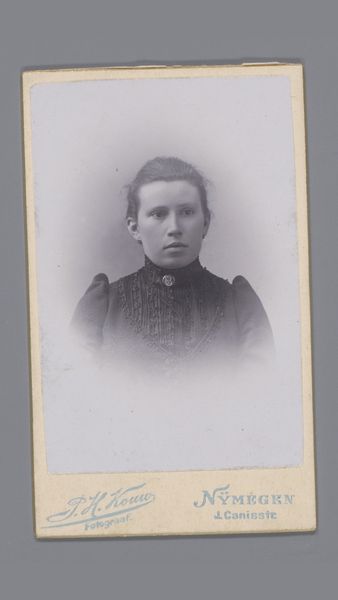
photography
#
portrait
#
dutch-golden-age
#
pictorialism
#
photography
#
realism
Dimensions: height 104 mm, width 62 mm
Copyright: Rijks Museum: Open Domain
Curator: This is a studio portrait of Pietertje Kramer, taken sometime between 1890 and 1910 by D. Fraenkel & Zoon in Amsterdam. Editor: My first thought is how muted and dreamlike the image appears; it’s almost as if she's captured in a faded memory, all softened edges and gentle tones. Curator: Exactly, the tones of this photographic print draw attention to its material construction. Note how the photographic emulsion gives texture to her face and clothing. What kind of labor went into producing such prints and how widely distributed these studios were speaks to the developing middle classes in Amsterdam. Editor: It's fascinating to consider how these studios operated. Photography at this time was rapidly becoming more accessible. This piece signals a shift in portraiture from the realm of the elite and upper class to a much more general practice, making it increasingly common to document a wider scope of everyday people. Curator: The professional portrait enabled many individuals to participate in this growing visual culture. We can really dig into the fashion; consider the crisp white cap she’s wearing along with her dress, blouse, and elaborate beaded necklace and brooch. Someone took the time to not only acquire these garments and accessories, but they represent decisions made to stage her social presentation for posterity. Editor: Absolutely, and this careful construction highlights the fascinating social implications of portraiture during that time. Her calm and steady gaze makes me wonder about Pietertje’s place in society at this time. What community did she come from? The detail in her garments gives hints about the social landscape from which she comes. Curator: Let's consider this artwork's afterlife as a visual document that still has cultural resonance and visibility today. What it does suggest is that everyday laboring class folks began participating in visual representation and material consumption to produce a sense of selfhood. Editor: Precisely, and seeing portraits such as this help us consider how photography democratized not only who could be portrayed but who was eventually *seen* in broader historical narratives. Curator: This really drives home how studio photography became embedded into people's visual consciousness through broader systems of labor, consumption and distribution. Editor: A single image, indeed, speaking volumes on so many layers about cultural, economic and artistic histories intertwined.
Comments
No comments
Be the first to comment and join the conversation on the ultimate creative platform.
